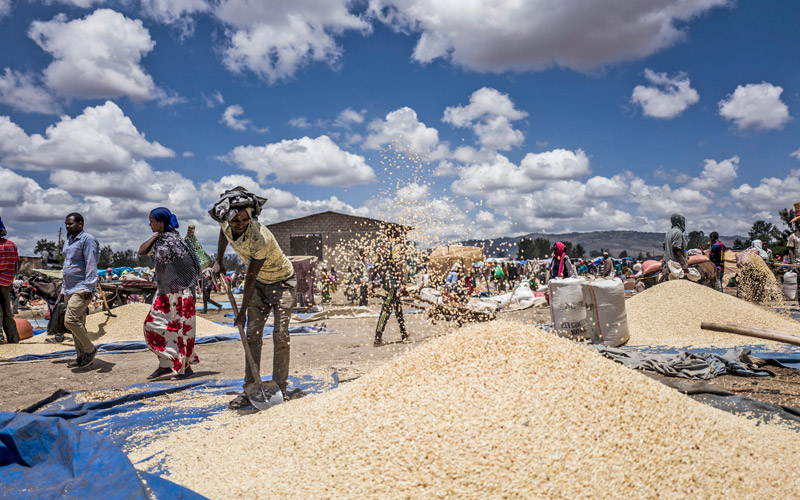COVID, conflict and climate change have created what the
UN recently called a “catastrophe” for 34 million people across three dozen countries, pushing them to the brink of famine.
Tony Rinaudo, World Vision’s chief climate action advisor, sees the crisis response as a chance to implement long-term environmental solutions that could eliminate famines altogether.
“By all means, address the immediate needs. But to make the best of a very bad situation, let’s use this crisis to build back better,” he told Michael Messenger, President & CEO of World Vision Canada in a recent video interview to mark Earth Day.
Watch the interview now:
Tony Rinaudo, a world-renowned expert on simple, inexpensive, environmental solutions, has made a career of implementing programs that help mitigate the impacts of climate change on the world’s most vulnerable people, while helping them adapt and build resilience against the shocks that increase food insecurity.
Famously
known as the “forest maker”, Rinaudo pioneered a land restoration approach in Niger more than 25 years ago to help push back the encroaching Sahara Desert. Known as “Farmer Managed Natural Regeneration” (FMNR) the process brings degraded land back to life with the help of local farmers. Bringing back the trees and rejuvenating the natural landscape has had a remarkable impact.
“It was a revolution,” Rinaudo says. “Without planting a single tree, simply by recognizing what was there, literally at our feet, caring for it, nurturing it, allowing it to grow, 200 million trees came back into that landscape over a 20-year period. Because of the improved soil conditions and micro-climate, that equated to 500,000 more tonnes of grain being harvested every year, benefitting two and a half million
people in the poorest country in the world.” FMNR has had a ripple of secondary benefits, for example, conflict in Niger was reduced by 70% as resource availability improved.
FMNR has since spread to more than 26 African countries, including Humbo, Ethiopia, epicentre of the devastating famine in the 1980s. “We saved many thousands of lives,” Rinaudo says. “But for the next 20 years we were obliged to give some food aid in that community. We implemented forest regeneration in 2006 and within six years, this historically food aid dependent community was food secure and selling a surplus to the World Food Program.”
 Surplus grain produced through the Humbo Community Reforestation Programme is prepared for distribution. Photo: Silas Koch
Surplus grain produced through the Humbo Community Reforestation Programme is prepared for distribution. Photo: Silas Koch
So far FMNR has restored 15 million hectares of farmland in West Africa alone. What is the global potential to scale up FMNR globally? “There are more than two billion hectares of land that need restoring,” Rinaudo says. “What’s the potential? Give me the world!”
Tony has a strong message for those who still have a bleak outlook for the future of the planet: “I speak to people around the world who have given up hope, who think it’s too hard, that it’s too late. Nothing could be further from the truth. There is so much we can do and there is so much we should do.”
World Vision has declared its
highest level of emergency response in countries across East Africa to help prevent the starvation of millions of people. And this current crisis is a symptom of a much larger problem, the World Bank estimates that climate change will push
an additional 100 million people into poverty over the next decade.
Join Tony and learn more about how we can address the current hunger crisis while preventing future famines altogether.